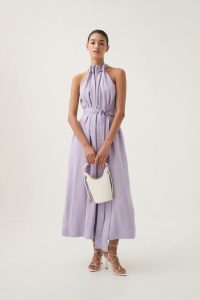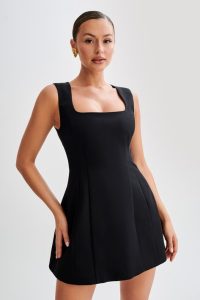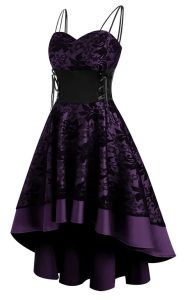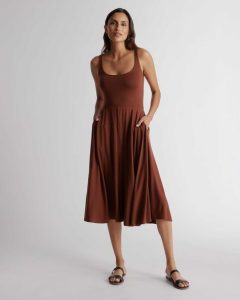Imagine a bright red sports car with yellow racing stripes. Or, picture a chocolate bar wrapped in a distinctive gold wrapper. These are just two examples of trade dress, a legal concept that protects the visual appearance of a product or service. Trade dress goes beyond trademarks to encompass the overall look and feel that identifies a brand in the marketplace.
Understanding Trade Dress
Dress falls under intellectual property law, alongside trademarks, copyrights, and patents. Here’s a breakdown of what it is and how it functions:
Protecting the overall look and feel:
Unlike trademarks that focus on specific words, symbols, or logos, dress safeguards the complete visual presentation of a product or service, including elements like packaging, design, color schemes, and even shapes.
Building brand recognition:
A distinctive dress helps consumers easily identify a particular brand. Think of the Coca-Cola bottle or the Tiffany blue box. These unique design elements instantly tell consumers about the brand behind the product.
Preventing consumer confusion:
Dress laws exist to prevent companies from copying the look and feel of established brands, which could mislead consumers.

What Can Be Trade Dress?
Dress can encompass a variety of visual elements that contribute to a brand’s identity. Here are some common examples:
-
Product packaging: The design and shape of a product’s packaging can be protected as dress. The aforementioned chocolate bar example highlights this concept.
-
Product design: The unique shape or configuration of a product itself can be trademarked. For instance, the design of a particular type of screwdriver might be protected dress.
-
Color schemes: Distinctive color combinations associated with a brand can be protected dress. Taxicabs and their yellow color scheme are a common example.
-
Dress can also include: Store layouts, website design elements, and even sounds associated with a brand (think of the MGM lion’s roar).
Requirements for Trade Dress Protection
Not all visual elements qualify for dress protection. Here are some general requirements:
-
Distinctive: The look and feel must be distinctive enough to identify a particular brand. Generic shapes or colors wouldn’t qualify.
-
Non-functional: The design element cannot be solely functional. For instance, the shape of a bottle might be functional for holding liquid and wouldn’t qualify. However, a uniquely designed bottle cap could be protected dress.
-
Acquired distinctiveness: In some cases, even elements that weren’t inherently distinctive can acquire distinctiveness over time through extensive brand association. Think of the Tiffany blue color, which wasn’t always unique to the brand but has become so over time.

How to Protect Trade Dress
Unlike patents or copyrights, dress isn’t automatically protected upon creation. Here are some ways to strengthen your dress rights:
-
Building brand recognition: The more consumers associate the look and feel with your brand, the stronger your dress rights become. Marketing and advertising efforts play a role here.
-
Federal registration (optional): While not mandatory, registering your dress with the United States Patent and Trademark Office (USPTO) can provide additional legal benefits and create a public record of your ownership.
-
Using TM symbol: Displaying the TM (Trademark) symbol alongside your dress can deter potential copiers.
Dress is a valuable legal tool for businesses to protect their brand identity. By understanding what dress is, what can be protected, and how to safeguard your rights, businesses can ensure consumers easily recognize their unique products and services in the marketplace.

Enforcement of Trade Dress
Once you’ve established a protectable dress, there are ways to enforce your rights if someone copies it. Here’s a general overview:
-
Legal action: If another company uses a confusingly similar look and feel for their products or services, you can take legal action to stop them. This might involve filing a lawsuit for trademark infringement.
-
Focus on consumer confusion: The core argument in a dress infringement case is that the similar look and feel creates confusion among consumers. This could lead them to believe they’re purchasing your product when they’re not.
-
Consulting an attorney: Dress law can be complex. If you suspect someone is infringing on your dress, it’s wise to consult with an intellectual property attorney. They can advise you on the best course of action.
The Importance of Trade Dress
Trade dress plays a significant role in the marketplace:
-
Benefits consumers: By protecting unique brand identities, trade dress helps consumers make informed choices. They can easily recognize the products and services they trust.
-
Incentivizes innovation: Trade dress protection encourages businesses to invest in creating distinctive brand identities. This can lead to a more competitive and innovative marketplace.
-
Fair competition: Trade dress laws help ensure fair competition by preventing companies from simply copying the look and feel of established brands.

Trade dress is a powerful tool for businesses to safeguard their brand identity. It goes beyond trademarks to encompass the total visual experience associated with a brand. By understanding trade dress and how to protect it, businesses can ensure consumers easily recognize their unique products and services in the marketplace.
Examples of Trade Dress in Action
Understanding how trade dress works in real-world scenarios can be helpful. Here are some examples:
-
The Coca-Cola bottle: The iconic contour shape of the Coca-Cola bottle is a classic example of protected trade dress. The unique design goes beyond simply holding the beverage and has become instantly recognizable to consumers around the world.
-
The Tiffany blue box: The distinctive shade of turquoise blue used by Tiffany & Co. for their packaging is another example of trade dress. Over time, this color has become strongly associated with the brand, even though the color itself isn’t inherently unique.
-
Distinctive product shapes: Think of the unique shape of a certain popular sports drink bottle or the design of a particular brand of guitar. These distinctive shapes can be protected as trade dress if they function as a source of brand recognition.
These are just a few examples, and trade dress can apply to a wide range of products and services. The key concept to remember is that it protects the overall look and feel that uniquely identifies a brand in the marketplace.

Conclusion
Trade dress plays a significant role in brand recognition and consumer protection. By understanding what it is and how it works, businesses and consumers alike can appreciate the importance of this aspect of intellectual property law.
